
8 minute read
Veterans Village: Forgotten in Paradise
Forgotten in Paradise

Advertisement
The VFW Veterans Village is often overlooked despite its noble mission
BY BRAD ROGERS PHOTOGRAPHY BY RALPH DEMILIO
Thirty-five miles northeast of downtown Ocala, at the end of a long, narrow country road about a mile south of Fort McCoy, sits the VFW Veterans Village. It’s a residential facility for veterans that provides their every necessity for daily life. By all accounts, it more than lives up to the billing on its web page: “Comfort and affordability set on 42 acres in sunny Marion County.”
Yet, the Veterans Village, celebrating its 30th year in existence, has 20 of its 70 rooms sitting vacant. And for Director Al Lugo, it is perplexing.
“No one knows we’re here,” said Lugo, a retired Army lieutenant colonel who served in Afghanistan and finished his career on the Army General Staff in the Pentagon. “The thing is, the people who move in here and live here never leave.”
The Veterans Village was built by the Florida Department of the Veterans of Foreign Wars and opened its doors in October 1991 to “provide a home-like atmosphere offering affordable housing and services to qualified veterans and their spouses.”
The building is made up of six wings, with five of them named for one of the military branches and the sixth named in honor of women in the military. Each of the Veteran Village’s 70 rooms is a studio apartment with a living area, sleeping area, bathroom, walk-in closet and individually controlled heat and air.
But that’s far from all that residents get for $1,415 a month, or $1,615 for a couple. Also included in the monthly rent is three meals a day and snacks, a 24-hour kitchen, telephone service, internet service, laundry rooms, library, fitness center and, of course, more than 40 acres of tranquil, oak-covered acres to roam.
The Veterans Village also provides residents – if they want – toilet paper, toiletries and linens. On top of that, each resident gets weekly housekeeping service, including clean linens and cleaning service.
“This is like a cruise ship on land,” Lugo said. “It’s all inclusive. The only thing they have to pay for is their beer, their scotch and their cigarettes, if they partake in those things.”
The difference in the Veterans Village and most old soldiers’ homes across the country is that the Fort McCoy facility is not intended to be an assisted living facility, although residents get plenty of assistance. Rather, it is what Lugo calls “an independent living” facility where residents must be able to care for themselves. That means they must be able to self-administer medications; feed themselves; be self-ambulating if they use a walker, a scooter or a wheelchair; and be able to bathe, groom and dress themselves.
Qualifying to live in Veterans Village requires only that you be a veteran with an honorable discharge or their spouse. That spouses are welcome at the Veterans Village sets it apart from most veteran residential facilities, Lugo said.
“Most of the veterans’ facilities around the country are for veterans only, not spouses,” he said. “But here’s the key. When that veteran dies, they ask their spouse to leave – usually within 60 days. I think that’s criminal.”
Like most organizations, its leader invariably leaves his or her mark. In Lugo’s
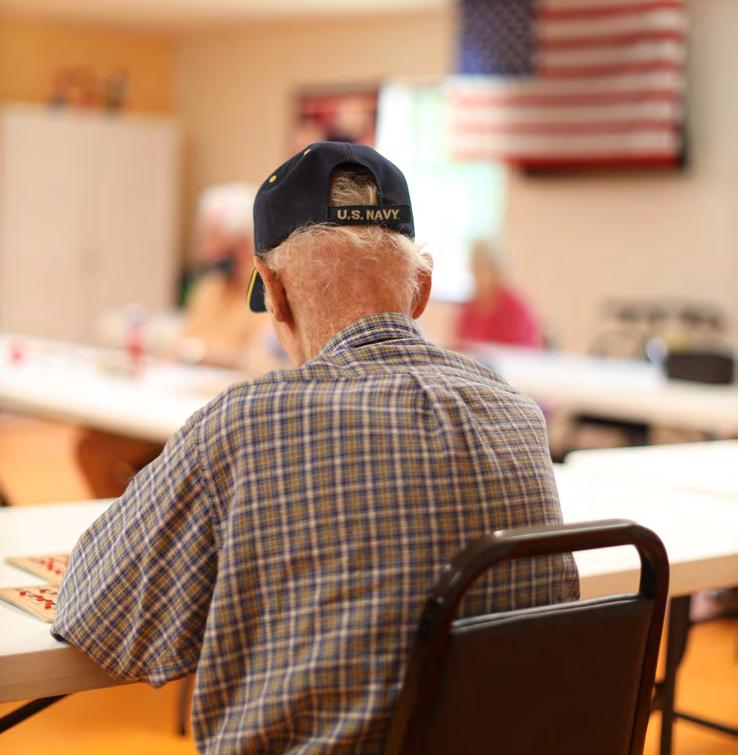
case, you see it the moment you walk in the door. Greeting visitors is a welcome sign, some perfunctory COVID-19 rules and warnings and a sizeable display of Mickey Mouses and other Disney characters and memorabilia. Curious.
Then walk into Lugo’s nearby office and it is immediately apparent the tall, burly ex-Army officer has an obsession with Mickey Mouse. Stuffed Mickey Mouses, dozens of them, line the walls and floor of the office. And, of course, he wears a Mickey Mouse watch.
But why?
First of all, Lugo says most of the Mickey Mouses in and around his office were gifts. And he is happy to have them.
“The way I see Mickey Mouse is he is a character that brings joy and cheer to people,” Lugo said. “Nobody’s ever mad at Mickey Mouse.”
Not coincidentally, Mickey Mouse is kind of responsible for bringing Lugo to Ocala. As an enthusiastic Disney fan, Lugo for years would stop at the former Disney Welcome Center at the State Road 200 exist off Interstate 75 on his way to vacation at Disney World. He got a glimpse of Ocala each time he stopped, and when he retired from the military, he came back for a closer look.
He was looking for a community where his children could go to the same school. When he came here, though, he found something surprising. Ocala, home to more than 40,000 veterans, is a military town.
“I moved to Ocala because they respected and honored military veterans,” he said. “Ocala has the feel of being outside a military post.”
Once he moved here, Lugo took the job of running Veterans Village. His first impression was that it was “kind of dilapidated,”
“It needed a lot of work, a lot of TLC,” he said.

He said there also was a total lack of networking in the community as well. Again, “No one knows we are here.”
But Lugo found a friend in local government. Pat Howard, a retired Marine Corps general, was the county administrator at the time and was sympathetic to the Veterans Village’s and Lugo’s needs.
Howard ultimately helped Lugo land two grants totaling more than $1 million to fix and renovate the Veterans Village. It also, at the time, raised sorely needed awareness about the VFW facility, especially among the County Commission and local veterans’ organizations.
“He created a public relations opportunity that has grown,” Lugo said.
Veterans Village employs 20 staffers and has an annual budget of about $1 million. The budget is determined by the number of residents, because the facility’s revenue is almost entirely derived from the rent income. Although the VFW of Florida owns the building and land, the operational costs fall totally on the Veterans Village itself. So, Lugo said he operates under “Lugo’s Principle,” which is “don’t spend more than you take in in a month,” which currently is about $50,000. Obviously, the more residents who live there, the bigger the budget.
For residents, though, Veterans Village is a haven and a bargain.
Frank Felker is a 74-year-old and has lived in the Fort McCoy facility longer than anyone else, 14 years. He said he was attracted to the quiet, country atmosphere
“I grew up in the country in Texas and I loved it,” he said.
Felker said he has seen the changes, indeed the improvement in Veterans Village since he moved in. “It was still a nice place (when he arrived),” he said, “but it was kind of dismal.”
Today, he said, the facility is cleaner, brighter and the services are better.
“It’s a good place to live,” said Felker, a retired sales executive who, after he moved in, got a degree in Christian studies and became ordained. “The rent’s about half of what they’d be at similar places. I wouldn’t live anywhere else.”
Sharon Beam, the resident coordinator, is responsible for making sure the residents’
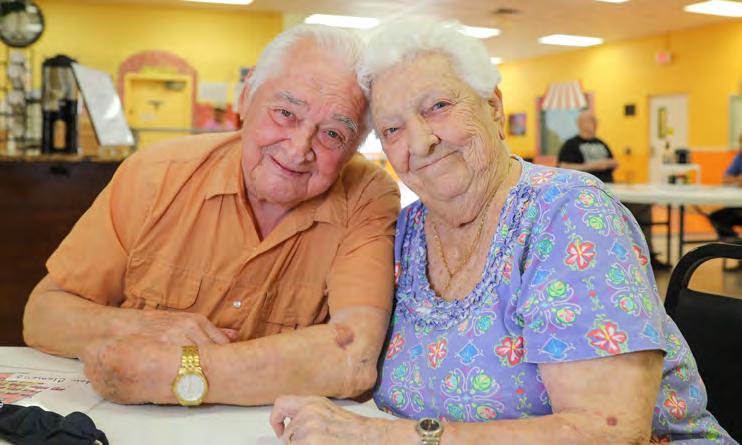
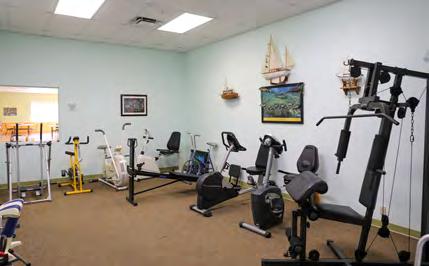
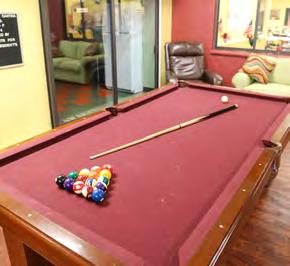
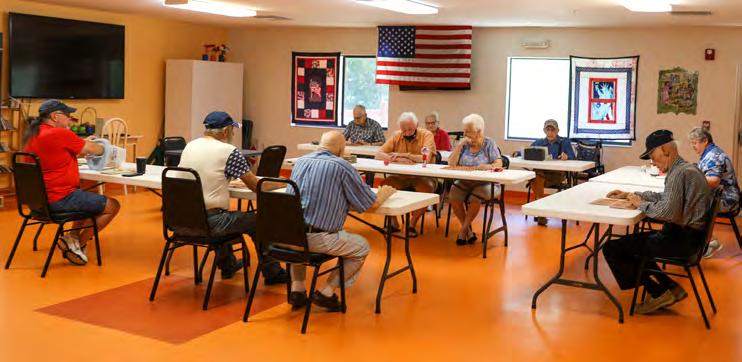


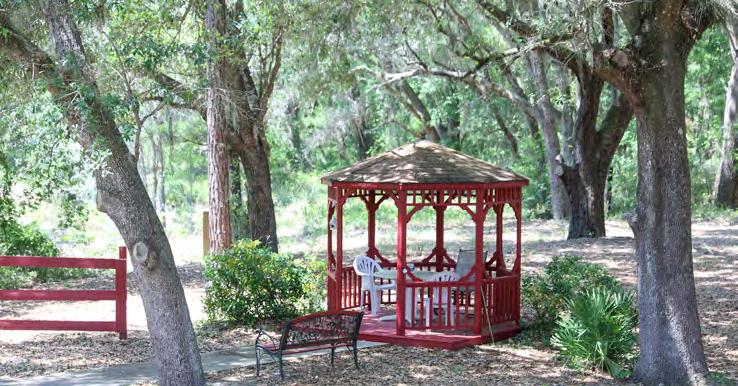
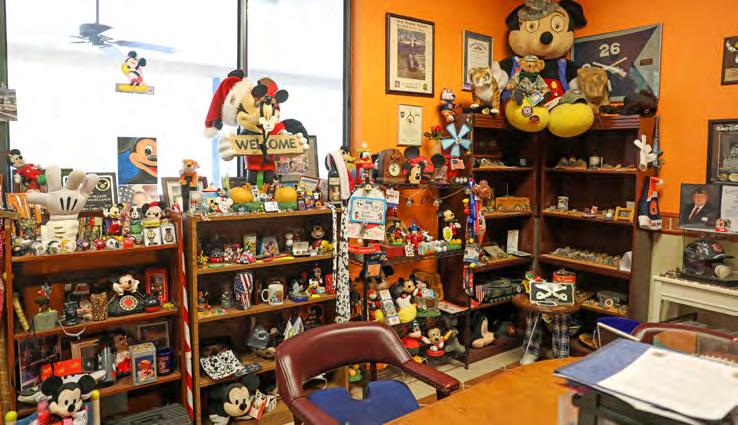
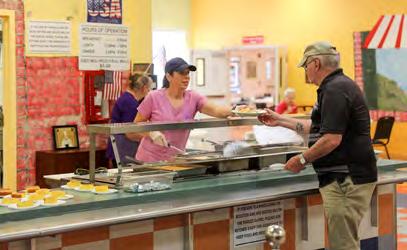

needs are met and oversees the upkeep of the facility. With residents who range in age from 64 to 99, she said most people who come to the Veterans Village are looking for a safe place to live and to be among other veterans.
“It’s peaceful and tranquil,” she said. “We have events. It’s the camaraderie. They eat together. We have bingo and picnics. If someone is missing, they notice and want to know where they are and what’s wrong. It’s like family.”
As a measure of how safe and secluded the Veterans Village is, consider this: Since the beginning of the COVID-19 pandemic, there has not been one case of the virus among residents or staff.
Beam acknowledges, however, that some who come to visit are turned off because there is no pool or golf course and that it is located so far from town.
Echoing what Lugo said, a lot of people simply are unaware of the Veterans Village’s existence.
“I get that all the time – ‘I didn’t know you were here,’” she said.
“We try to market … but we really don’t have the funding for marketing.”
Another problem, Beam said, is so many veterans who come to the village simply do not have enough income to live there. “Some of these veterans only get about $900 a month in income,” she lamented. And because the Veterans Village is not supplemented by any government or private source, they cannot accept them.
To try and help these veterans, Beam is currently work with the U.S. Department of Housing and Urban Development to get housing assistance for low-income veterans.
“We’ve got to do something to help people,” she said.
Lugo has started getting some help from the community. Lowe’s Stores, through its “Heroes Program,” recently built a gazebo overlooking the lake behind the Veterans Village. The Fraternal Order of the Police Lodge in Ocala also built a fishing pier. But, not surprisingly, he said the Veterans Village could use more help.
If you want more information about or to take a tour of the Veterans Village, call 352/236-0823, or go to their website at www.vfwveteransvillage.org.










